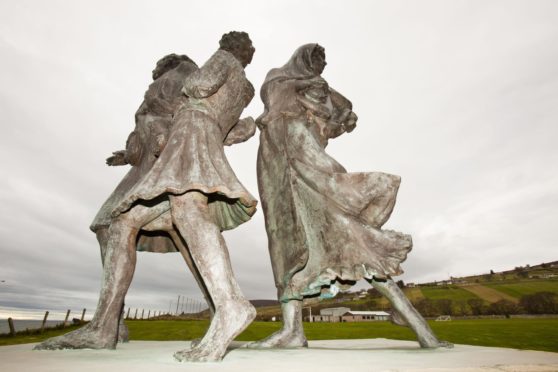An important academic research paper is published today. It presents evidence that money from Caribbean and North American slavery financed the purchase of many large estates in the West Highlands and Islands.
It reveals a link to the Highland Clearances. It shows how 63 estates were purchased by significant beneficiaries of “slavery-derived wealth”. The majority (37) were bought between 1790 and 1855, the main period of eviction in the Highlands and Islands.
Readers of this column may recall mention in the summer that this work was being undertaken in Coventry University by Dr Iain MacKinnon, a Skye man. His co-author is Scottish historian Dr Andrew Mackillop of Glasgow University, who is originally from Harris
They have calculated that 1,144,395 acres representing 33.5 % of the West Highlands and Islands, passed through the hands of people enriched by slavery directly or indirectly. This was either profits of the slavery itself or from the massive compensation paid to British slave owners by the government, when slavery was abolished in most of the British Empire.
An 1833 Act of Parliament provided £20m, worth more than £16 billion today. In excess of £120m of that equivalent figure was spent buying the estates studied. But not a penny went to former slaves.
There were also indigenous families who had profited from slavery. The Mackenzies of Gairloch, Macleod of Macleod and the House of Sutherland, had married into slavery-derived wealth. Meanwhile Cameron of Locheil and Mackintosh of Mackintosh “appear to have been directly involved in the plantation economy in Jamaica.” In the 1880s these families combined held at least 690,313 acres in the counties of Ross and Inverness.
The MacKinnon/Mackillop paper says those who made money from slavery, viewed their Highland land in similarly “extractive” terms.
“It was simply an extension of their capital. These owners now brought such attitudes to bear upon people and communities inhabiting at least one million acres of the Highlands – tens of thousands of the region’s population.”
These attitudes meant the eviction of local people, not least by the likes of Colonel Alexander McBarnet who bought the Torridon Estate in 1838 and George Rainy who bought the island of Raasay in 1845. Then there was John Gordon of Cluny who removed more than 2,900 people – “forced in some cases with circumstances of shocking inhumanity” – in the years following his purchases in Uist and Barra from 1839.
The paper, which builds on work by Professor Sir Tom Devine, calculates that at least 5,000 were evicted by this new slavery elite. But concludes: “After the actions of traditional clan families implicated in slavery are taken into account this figure will be very much higher, almost certainly into the tens of thousands.”
The authors are clear that not all slavery beneficiaries were evictors. But given their study area is only from Islay north in the Inner and Outer Hebrides, and the Atlantic coast of Inverness-shire and Ross-shire, there must have been many more.
It is telling that while this is an independent academic research paper, it is published by Community Land Scotland (CLS) the representative body for community landowners and local trusts.
It reinforces CLS’s growing reputation as an important engine of thinking on rural Scotland. It endorses one of the paper’s arguments that these “slavery elites” helped shape significant parts of rural Scotland in ways still seen today.
The authors contend: “Slavery beneficiaries were also integral to the new image of the Highlands as a sporting playground, turning hundreds of thousands of acres into deer forest, thus condemning these areas to be ecologically impoverished artificial wildernesses into which elites inserted themselves each summer in order to kill for sport. In addition, the cultural productions of their influential and creative guests helped to redefine the area, and its inhabitants, in romantic terms and helped pave the way for highly-contested conceptions that the area is a ‘wilderness’ or ‘wild land’ today.”
But there is something more. Slavery has been described as ‘the USA’s original sin’. It offends against its self-image as a nation uniquely conceived in liberty, dedicated to the proposition that all men are created equal – oft repeated in recent weeks.
Thomas Jefferson, a Founding Father and third US President, described slavery as “a moral depravity” despite being a slave owner himself.
That this moral depravity funded the purchase of huge tracts of Highland land, that it financed the eviction of thousands of local people thereby disfiguring Scotland’s story, is surely important to know today. It is every bit as important as agonising over statues.
David Ross is a veteran Highland journalist and author of an acclaimed book about his three-decades of reporting on the region

